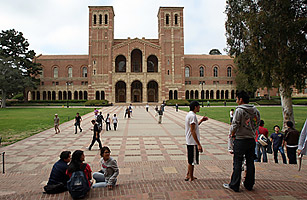
Every fall the professors at Beloit College publish their Mindset List, a dictionary of all the deeply ingrained cultural references that will make no sense to the bright-eyed students of the incoming class. It’s a kind of time travel, to remind us how far we’ve come. This year’s freshmen were typically born in 1991. That means, the authors explain, they have never used a card catalog to find a book; salsa has always outsold ketchup; women have always outnumbered men in college. There has always been blue Jell-O. In 1991 we were fighting a war in Iraq, and still are; health care needed reforming, and still does. But before despairing that some things never change, consider how much has. In 1991 the world watched a black motorist named Rodney King be beaten by L.A. cops, all of whom were acquitted; a majority of whites still disapproved of interracial marriage. Ask yourself, Would the people we were then have voted for a mixed-race President and a black First Lady? That year, apartheid was repealed, the Soviet Union collapsed, the Dow broke 3000. The next year, the first commercial text message was sent; now there are more transmitted every day than there are people on the planet. In the time it took for toddlers to turn into teenagers, we decoded the human genome and everyone got a cell phone, an iPod, a GPS and a DVR. As the head-spinning viral video “Did You Know” informs us, the top 10 jobs in demand in 2010 did not exist six years ago, so “we’re preparing kids for jobs that don’t yet exist using technologies we haven’t yet invented.” We have managed, rather gracefully, far more change than we predicted would come; it turns out that our past’s vision of the future was not visionary enough. This is often the case: reality puts prophecy to shame. “Sensible and responsible women do not want to vote,” declared Grover Cleveland in 1905. Harry Truman, in his 1950 State of the Union address to mark the midcentury, predicted that “our total national production 50 years from now will be four times as much as it is today.” It turned out to be more than 33 times as large. “It will be gone by June,” promised Variety in 1955 — talking about rock ‘n’ roll. “It will be years — not in my time — before a woman will become Prime Minister,” declared Margaret Thatcher in 1969. Leaders rely on the future as a vaccine against the present. The Soviets have put a man in space? “I believe we should go to the moon,” President Kennedy announces. “I have a dream,” the Rev. Martin Luther King Jr. declares as the world around him burns. Maybe the promise is realized, even surpassed; maybe it keeps receding, pulling us along. “The best thing about the future is that it comes only one day at a time,” Abraham Lincoln supposedly observed. Which is true for those in charge of creating it but maybe not for the rest of us. When we pause and look back, we get to see the past’s future, know how the story turned out. Did we rise to the occasion? Did we triumph? Did we blink? The past’s power comes from experience, the lessons it dares us to dismiss on the grounds that maybe things will be different this time. The future’s power is born of experiment, and the endless grudge match between fear and hope. We are having a dozen simultaneous conversations right now about change: in our institutions, our culture, our treatment of the planet and of one another.